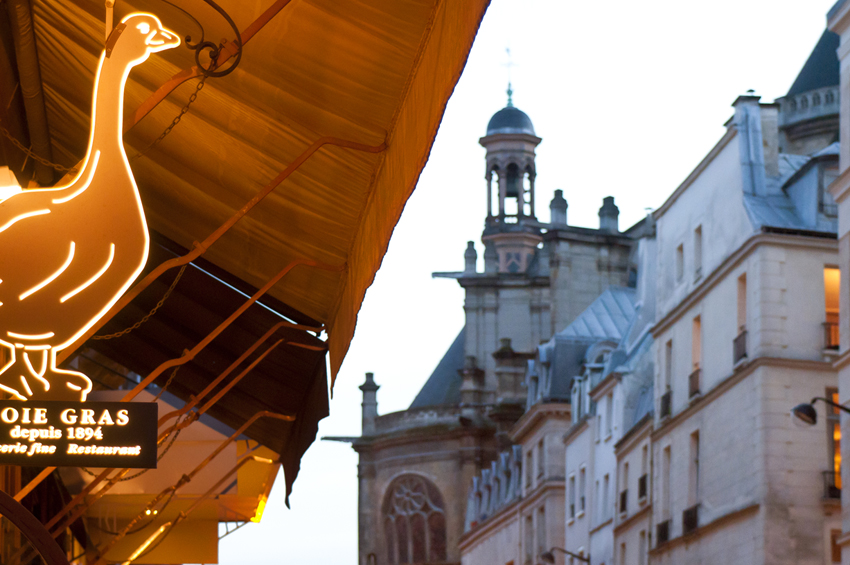A brief history of Les Halles
It was in the middle of the 7th century that Louis VI ‘Le Gros’ acquired the land referred to as the Champeaux. Up until then, markets were held on ile de la Cité then in place de Grève. Fish were transported from Boulogne sur mer by “fish channels” that deposited them out into the neighbourhood now referred to as Faubourg Poissonnière.
Little by little the Champeaux became the epicentre of French commerce, developed at the instigation of Philippe Auguste who secured them by walling them in and building two covered markets. Everything was available here. Contrary to what you might think, food was just the poor cousin. Les Halles was above all an orgy of fabrics, upholstery, furs, silks…
During the Renaissance, François I decided to bring harmony and order to this joyful bazar. So, he erected two covered market buildings that were named “piliers des Halles” that were standing until the mid-19th century.
In the same era, it was decided that a large church would be built to replace Saint Agnes’ chapel, erected in the 13th century, thanks to a tax on fish baskets. The construction of St Eustache would take 101 years, the church being officially completed in 1633 and consecrated in 1637.
The large central Halles are often associated with Haussmann and Napoleon III, when in fact their rebuilding was ordered during the reign of Louis Philippe, in January 1847. Although it was under Badinguet that the first stone was laid, in the Autumn of 1851. Baltard was tasked with covering three and a half hectares of land with some ten pavilions of iron, glass, and cast iron. Up until then, each trade had its street, from now on, they would have their Halle…
To stroll amongst the “Halles’ professions” was to see a truly surreal herbarium: there were “cabocheurs”, who smashed open sheep’s heads to get at the tongue and the brain; the men that force-fed pigeons by blowing corn from their own mouths into their beaks; egg checkers, charged with ensuring the eggs sold are fresh; “bombeurs”, who flattened duck breastbones; “verseurs” who laid out the fish on the stands; stackers who balance the vegetables in pyramids…
And then there are the famous “forts des halles”, the porters of goods in and out of the market, who founded one of Paris’ oldest companies under St Louis in 1250. To be one of these legendary colossi you had to have exceptional physical strength. The qualifying test was extreme: if you could walk 60m (the width of a Halle) whilst carrying 200kg you could hope to become part of this guild of Hercules…
Over more than a century, the “stomach of Paris” (so-called by Emile Zola in his book “Le ventre de Paris”) would rumble with its victuals, often rendering the neighbourhood impenetrable due to the monstrous traffic jams it generated, but that didn’t stop it creating its own true mythology.
Alas, the afflux of automobiles, and the Halles location at the heart of Paris, rendered the situation problematic. Not to mention the health standards that reached crisis point. It was necessary, therefore, to go elsewhere… Decided in 1960 in the throws of De Gaulle’s France, the actual move did not take place until the Spring of 1969. It must have been quite a strange spectacle to observe these 20,000 workers, 1000 wholesale enterprises, 10,000m3 of equipment and 5,000 tonnes of merchandise file out like one big comic strip on the back of some 1500 lorries. And all this took place in one week, from 27 February to 1 March 1969!
Exiles in La Villette since 1950, the butchers rallied round in turn, settling in the Marne Valley in 1975, and becoming part of one of the richest, most expansive food markets in the world: covering almost 73 hectares! But the poetry of the Halles, that too was spirited away…

